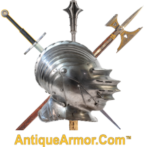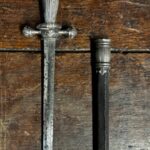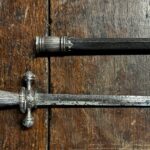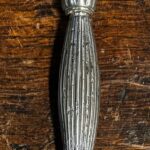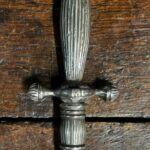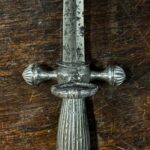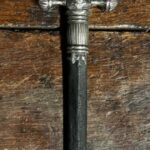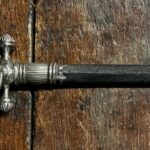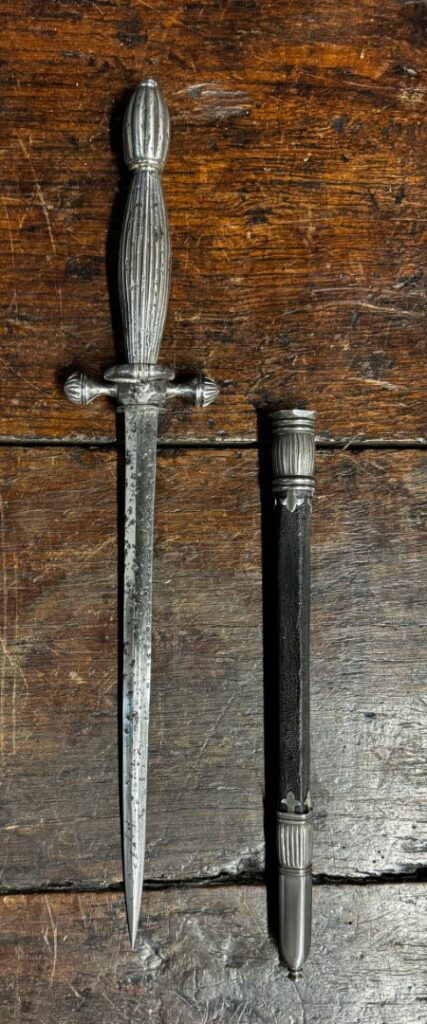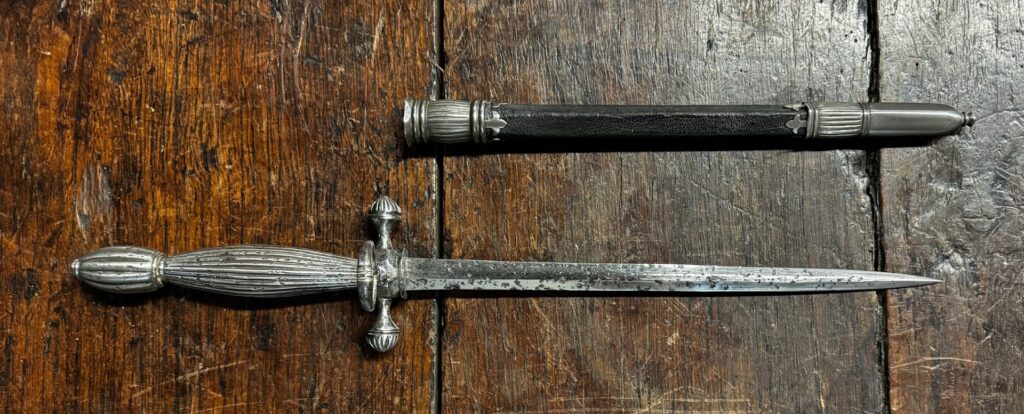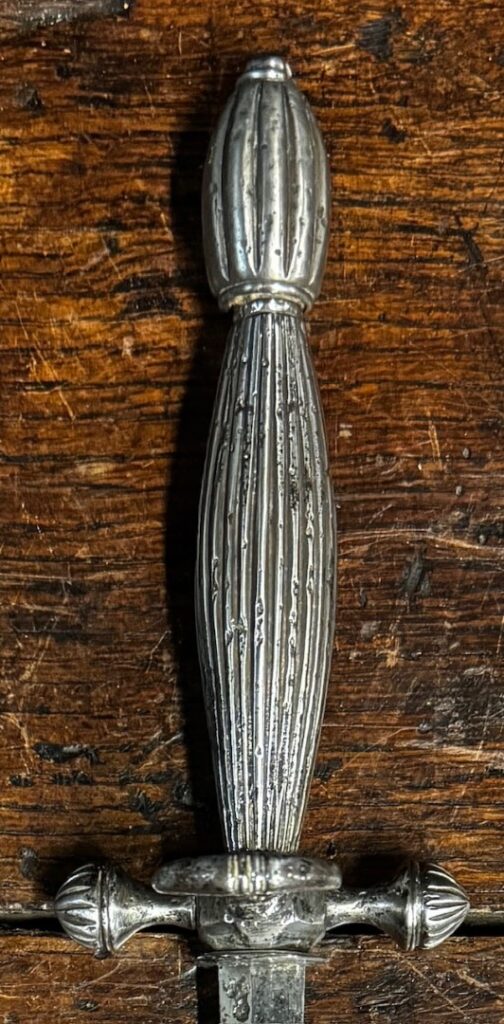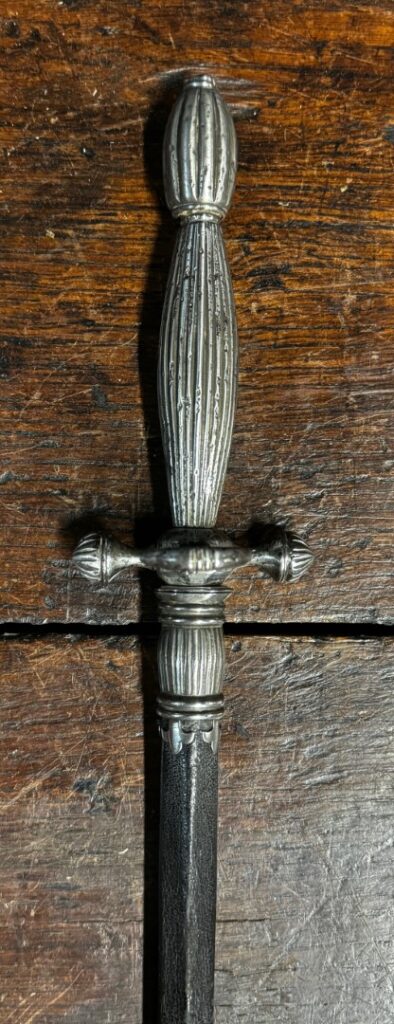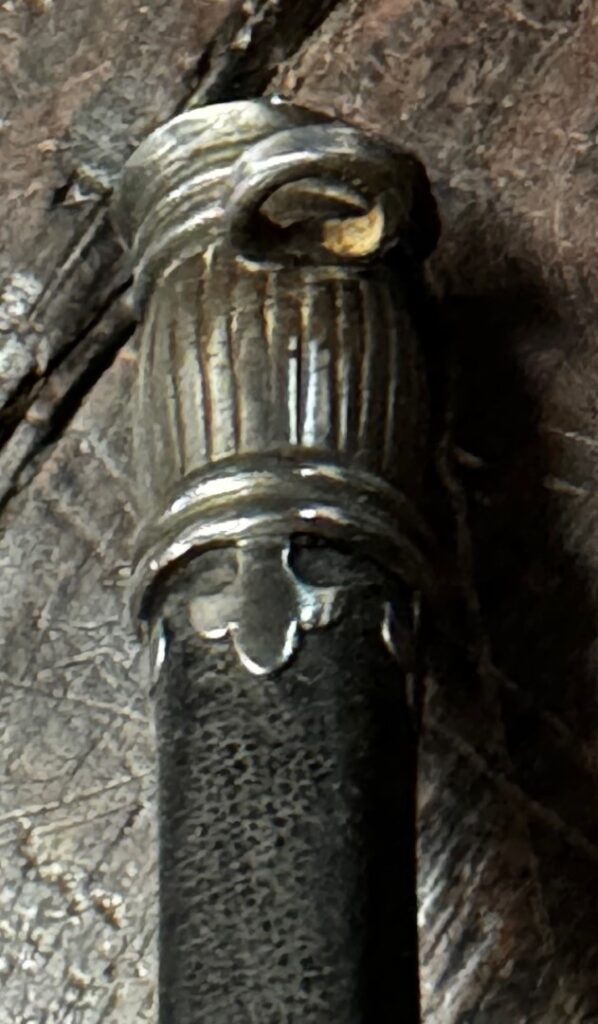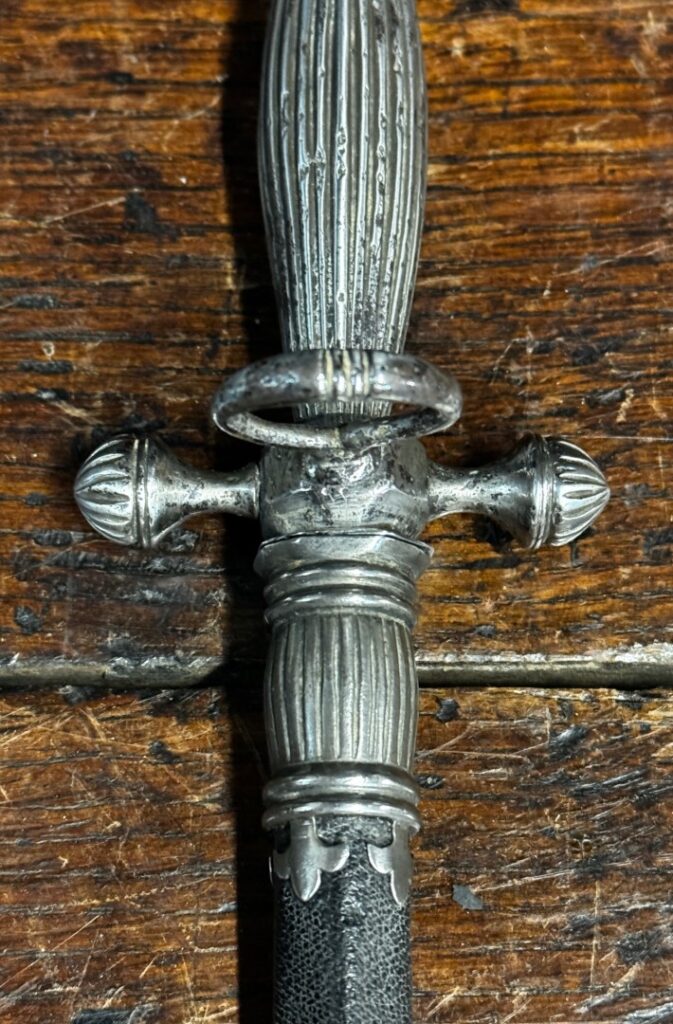1693) LARGE IMPRESSIVE DECORATED STILETTO WITH ORIGINAL SHEATH CIRCA 1650: Stilettos were the stealth weapon of the 1600s. They were so effective they had to be banned and only used in times of war or civil unrest.
Introduction: The 1600s accelerated the decline and importance of the dagger and increased the popularity of swords. Daggers in certain parts of Europe, namely the north, were still used for dress during festive occasions. The exception was the left-hand dagger and the stiletto, which was primarily used in Italy. The stiletto was created in the late 16th century in the northern Italian Peninsula but flourished throughout Western Europe in the 17th and 18th centuries.
Discussion: The stiletto/stylet is a small, all-steel civilian stabbing dagger easily concealable in a boot or sleeve. The Italian stiletto is designed for deep thrusting with minimal effort into very vulnerable body areas with its needle-like tip. It could quickly go through chain mail and leather clothing. Eventually, the Italian government considered stilettos assassins ‚ weapons “arma manesca,” The stiletto was eventually cataloged as an “arma insidiosa.” It was only allowed under penalty of law to be carried during war or civil unrest.
The four primary advantages of the stiletto are:
1) Concealment: It could be easily hidden in many places, providing its user with the element of surprise.
2) Effectiveness: Stilettos are small and sharp, so they can easily go through the mail and thick clothing.
3) Inexpensive: Anyone could afford one.
4) Simplicity: Anyone can instantly become very dangerous with a stiletto without extensive combat training or strength.
Stealth and cunning could be more important than fighting techniques. The stiletto is named after the “ústylus,” an ancient pointed writing instrument for scratching letters and drawings onto a wax-covered tablet. It also has a blunt end opposite the tip. At one time, it was incorrectly believed the stiletto was the evolution of the left-hand dagger when the rapier evolved into the short (pillow) sword; however, there is no proof of this.
-Pommel: Most of the time, the pommel is disk, oval, or spherical; however, more exotic variants can have animal, fish, or human forms.
-Guard: The guard is characterized by two short quillons terminating in a sphere or resembling an animal or human form. The small cross guard helps eliminate slippage, even when the user‚ hands are full of blood and helps increase penetration.
–Grip: The stiletto is usually made of all metal; however, some have wood, horn, or bone grips. The metal grips are chiseled into different forms and patterns to help the hand grip firmly on the small hilt.
-Blade: The stiletto’s blade was usually triangular or quadrangular-shaped, with no sharp edges. It was a stabbing weapon. Even though it was not a big dagger, a six-inch blade was still enough to penetrate clothing and strike a vital organ of the human body.
Conclusion: This is an exceptional, very large, elegantly decorated en suite with fluting stiletto with its leather sheath. This example has an appropriately sized ring guard, which means it could also be used as a left-hand dagger. This was a multi-use weapon. The wear on the metal fluted grip, is indicative that it was worn on the belt using using the sheaths loop. Priced to sell under $2K with free shipping world wide!!!*
